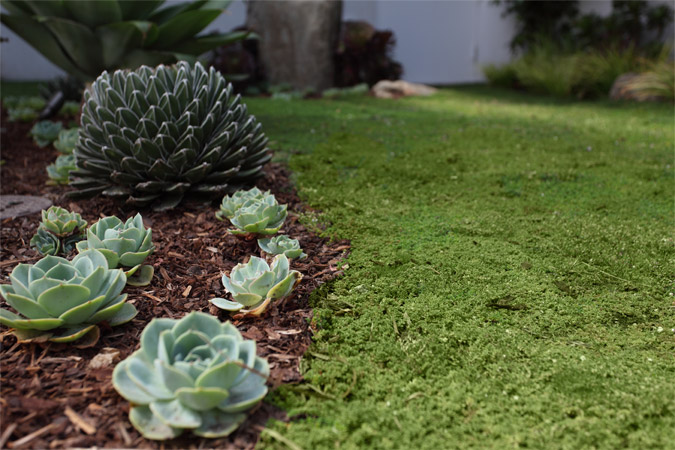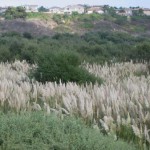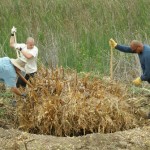
The custom door created by John Krwczyk features waves and an olive tree, extending a warm welcome and adding a sculptural element to the garden space.

In sync with the austere lines of the building, this low-growing version of the FormLA® IdealMow™ lawn requires no chemical fertilizers or pesticides and very little water in this environment, a material employed to protect both the ocean and surfers from toxic chemicals.

Clean lines and a simple color palette complement the modern, minimalist architecture and tailored, clean interior designs.

This outdoor kitchen is only visible to the cook. The curved accent wall protects both the outdoor and indoor aesthetic.

Mature, fruitless olive trees provide shade, buffer noise from PCH, and provide privacy from hillside properties.

Stylishly simple, the curved beds of permeable gravel accented with concrete pavers allow rain to absorb into the landscape.

Simple and commanding, this rock sculpture provides a focal point from the interior entryway as well as the approach to the front door.

Infrastructure was critical to protecting both the aesthetic and the ocean. Subsurface drip irrigation is all but invisible and produces no run-off or noise.

Like golden clouds, these grasses provide warmth and movement to the peaceful green and white landscape.
From within the Dane’s cubist home, this Zen-like garden and the ocean take command of a flawlessly simple, warm interior space. Mark Weaver and Associates, an interior design and project management firm, worked closely with FormLA Landscaping design and build teams to ensure the garden became an effective interior design element.




